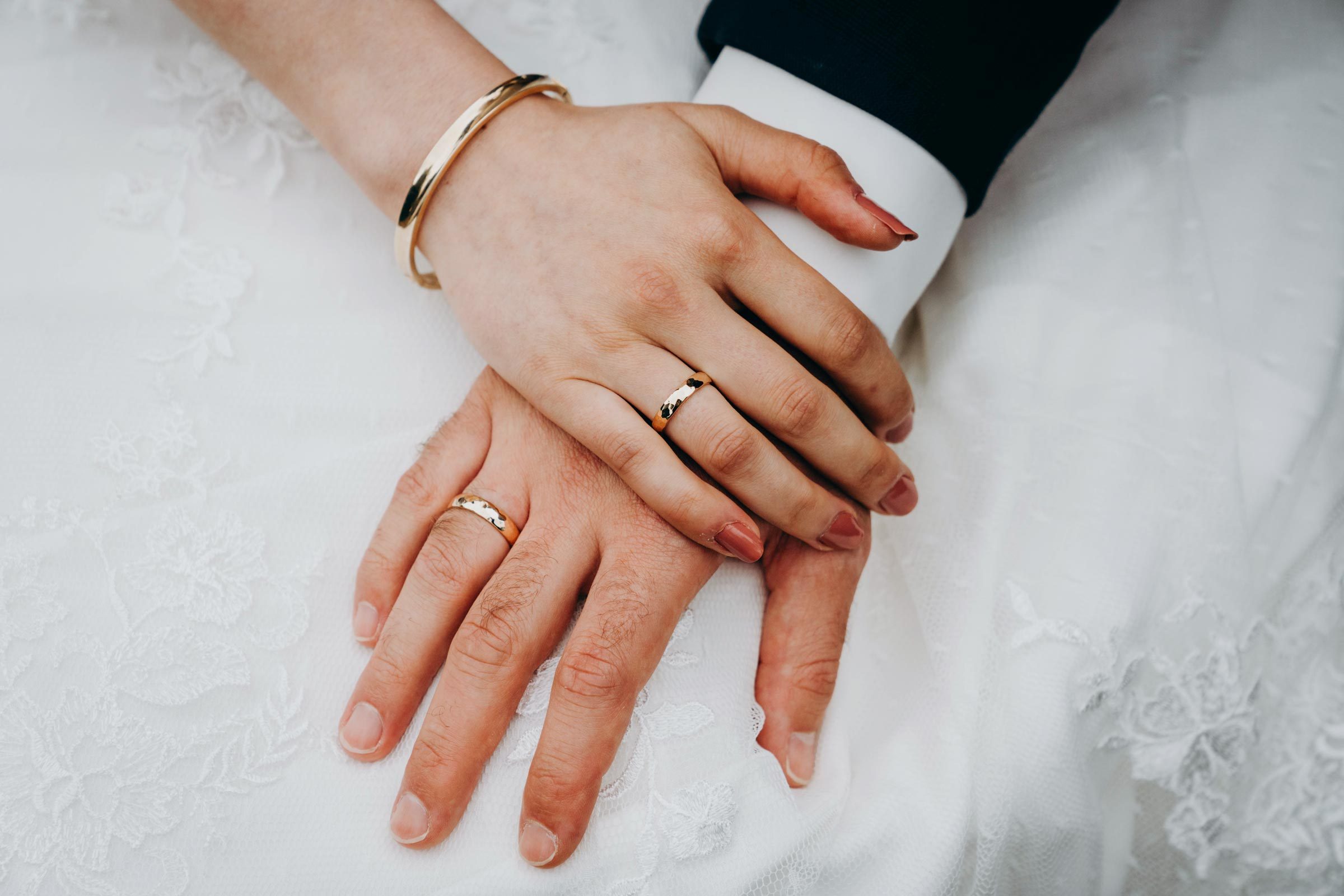The tradition of exchanging wedding rings dates back thousands of years and across many cultures. Rings represent the endless love between two people and the unbroken union they forge on their wedding day.

In modern Western culture, wedding rings are worn on the fourth finger of the left hand. This tradition stems from ancient Roman belief in the “vena amoris” – the vein of love said to run from that finger directly to the heart. But many other cultures have their own myths and meanings attached to wedding bands.
Ancient Origins
Some of the earliest examples of wedding rings date back nearly 5,000 years to ancient Egypt, where reeds and rushes were fashioned into rings for newly married couples. The circular shape represented eternity, with no beginning or end. It was believed the ring’s unbroken circle also warded off evil spirits and provided protection.
In some cases, the bride and groom exchanged ring bracelets rather than finger rings. These bands symbolized a pledge and were considered legally binding. Early Egyptian wedding rings were made from bone, leather, ivory, or wood. Royalty donned rings made of gold and silver.
Ancient Rome
The Romans continued the tradition of wedding rings, solidifying the practice in modern Western culture. Roman rings were more elaborate than Egyptian bands, often featuring carved gemstones. The Romans were also the first to link specific fingers to certain veins and arteries that led back to the heart. The fourth finger was believed to have the “vena amoris” – explaining the modern tradition of wearing wedding bands on the left ring finger.
Middle Ages
It was common during the Middle Ages for Christian brides to wear ribbons around their ring fingers until an actual wedding ring could be presented by the groom. Sometimes, a nobleman proposed with a ring, but it was only on their wedding day that brides received and began wearing the wedding band itself.
These bands tended to be simple, with less elaborate designs than we see today. Diamond engagement rings were rare – most couples wed with basic metal bands as a symbol of their union. However, royal and noble marriages were exceptions, with lavish jewelry and metals such as gold.
The Wedding Ring Through History
As the centuries passed, wedding rings took on more religious and cultural significance.
Religion
Many religious groups incorporated wedding rings into their ceremonies for symbolic spiritual meaning. For Catholics, a ring represented a covenant with God as the constant presence in the newly formed marriage. Jewish wedding ceremonies formalized the practice of putting a ring on the bride’s index finger before moving it to her ring finger later in the service.
Pledge of Fidelity
By the time of the Reformation and the influence of Protestantism in the 16th century, wedding rings took on greater meaning as symbols of fidelity and lifelong commitment between partners, not just as tokens of financial agreements between families.
Changing Styles
Styles, costs, and materials varied greatly across history. After the discovery of diamonds in Africa in the late 19th century, diamond engagement rings and wedding bands became popularized. The use of this precious gemstone offered another facet of symbolic meaning – the eternity of love associated with diamonds.
As the roles of men and women changed over decades and centuries, so too did traditions around proposing marriage and wearing wedding rings. By the mid 20th century in Western cultures, both men and women wore bands to denote their married status.
Cultural Variations
Beyond the West, wedding traditions took on distinct cultural significance around the world.
Asia
Many Asian cultures formalized wedding ring traditions over centuries. In India, brides are often given ornate rings by their new husbands and families, which are worn along with special toe rings to signify their newly married status. These wedding rings are traditionally made of gold or silver and beautifully designed with stones, motifs, and carvings unique to regional styles.
In Chinese culture, wedding rings are exchanged on the big day itself rather than at engagements. The bands represent the yin and the yang, the feminine and the masculine coming together in harmony. Traditionally, Chinese wedding rings for women were made of silver, representing purity, while men’s rings were crafted from stronger gold.
Africa
Throughout much of Africa, engagement rings were not historically given prior to weddings. However, wedding rings themselves carry enormous significance as public symbols of a wife’s status and relationship fidelity. These bands are generally made of silver, wood, or other locally sourced materials.
In parts of North Africa, distinctive triangular wedding rings are worn. This shape represents life, love, and fertility in an endless loop sharing one line – representative of the couple coming together as one.
Modern Wedding Ring Traditions
Today’s wedding ceremonies across the globe share certain commonalities in their rituals and ring traditions, despite regional and cultural differences. Some popular modern trends include:
- Diamond engagement rings, often with a matching diamond wedding band
- Elaborate matching wedding ring sets for bride and groom
- Personalized ring engravings
- Alternative metal options like tungsten, titanium, or stainless steel
- Unique ring designs like curved bands, colored stones, or ring guards/enhancers
Throughout all the variations in traditions and fashions, wedding rings maintain their essential symbolic meaning of binding two lives in love and fidelity. That enduring significance transcends cultures and generations.
The next time you attend a wedding or glance down at your own ring finger, consider the rich history and meaning found in that small, circular band – a tradition dating back thousands of years to represent the beautiful union of two souls.



